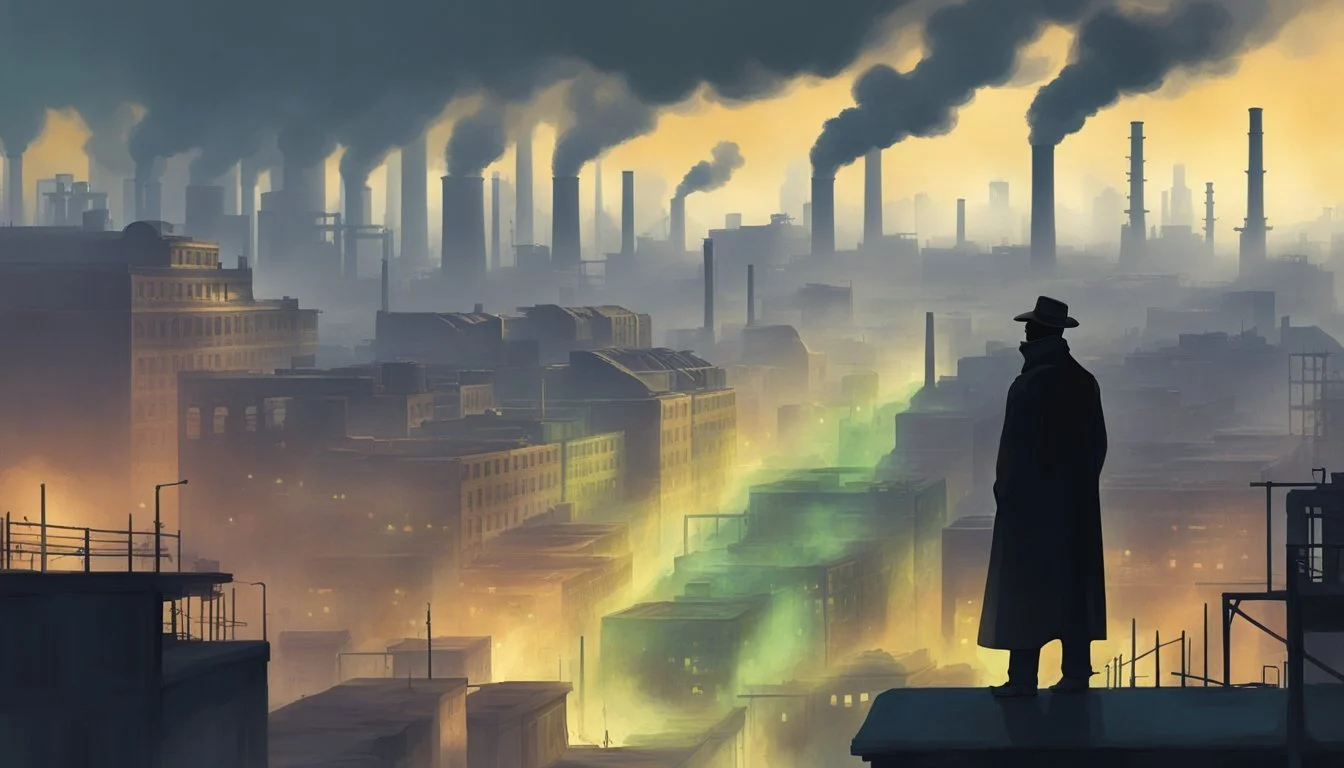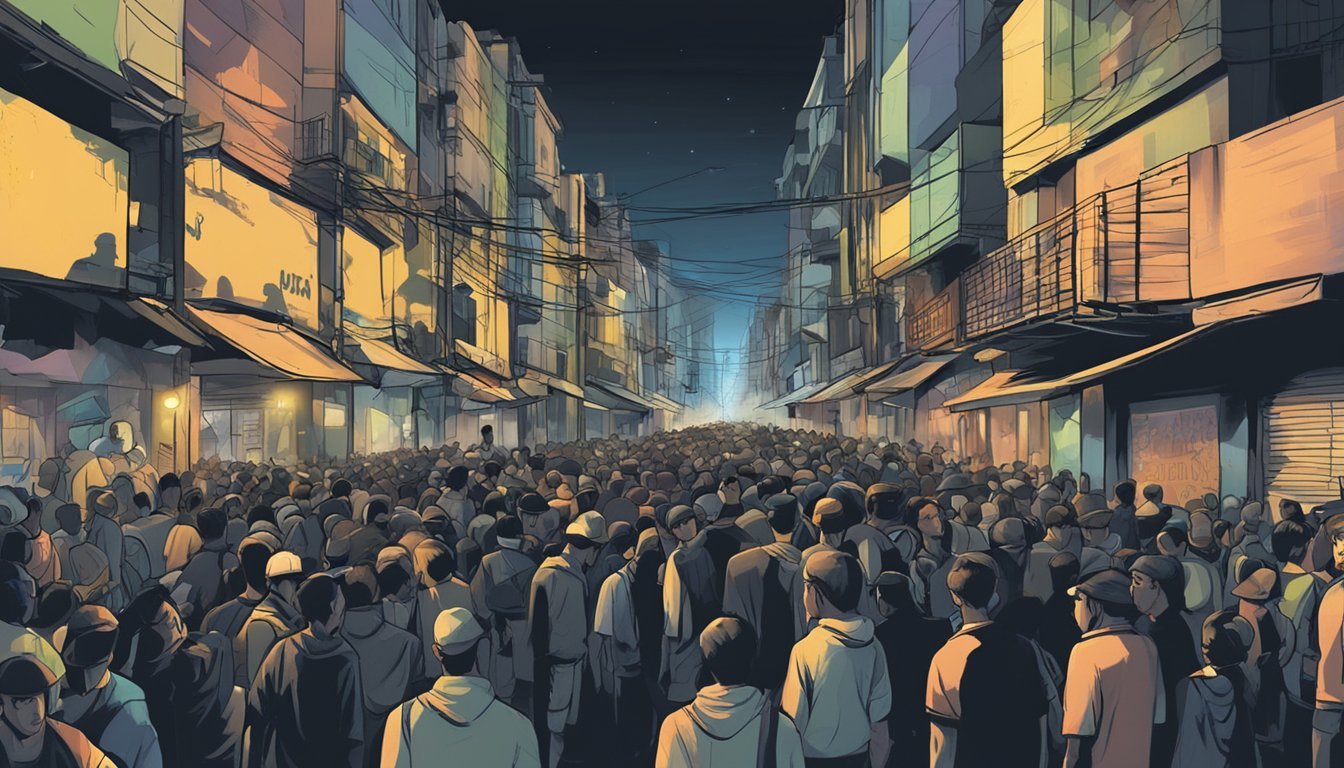Manila's Dark Secret: Romeo Quijano and the Forgotten Victims
Uncovering a Hidden Health Crisis
Manila, the bustling capital of the Philippines, harbors a dark secret from its recent past. In the late 20th century, a serial killer named Romeo Quijano terrorized the city, leaving a trail of victims in his wake. Quijano's crimes shocked the nation and left an indelible mark on Philippine criminal history.
The case of Romeo Quijano exposed the vulnerabilities of Manila's urban landscape and the challenges faced by law enforcement in tracking down a cunning killer. His actions sparked fear among residents and shed light on the need for improved security measures in the city.
Several documentaries have since explored Quijano's dark legacy, attempting to unravel his motives and methods. These films serve as a grim reminder of a troubled period in Manila's history and aim to honor the memory of the forgotten victims whose lives were cut short by Quijano's heinous acts.
The Enigma of Romeo Quijano
Romeo Quijano emerged as a complex figure in Philippine society, known for his controversial views and expertise in pharmacology and toxicology. His life and career trajectory were marked by academic achievements and public scrutiny.
Early Life and Education
Romeo Quijano was born and raised in the Philippines. He pursued a career in medicine, eventually specializing in pharmacology and toxicology. Quijano completed his medical education at a prestigious institution in Manila.
His academic performance was notable, earning him recognition among his peers and professors. During his formative years, Quijano developed a keen interest in the effects of chemicals on human health, which would later influence his professional path.
Rise to Prominence
Dr. Quijano gained recognition as a faculty member in the Department of Pharmacology and Toxicology at the University of the Philippines Manila. His research focused on the impacts of pesticides and other chemicals on human health and the environment.
Quijano's work caught public attention when he began voicing concerns about various public health issues. He became known for his critical stance on certain medical practices and policies. His controversial views, particularly regarding vaccines, sparked intense debates within the medical community and beyond.
Despite facing criticism, Quijano maintained his positions, often appearing on media platforms to share his perspectives. This public presence significantly increased his profile, making him a polarizing figure in Philippine healthcare discussions.
Manila Under Spotlight
Manila, the capital of the Philippines, holds a complex history and vibrant culture. Its strategic location and diverse population have shaped its role in the nation's past and present.
Geographical and Cultural Significance
Manila sits on the eastern shore of Manila Bay, straddling the Pasig River. This prime position made it a key trading hub for centuries. The city's architecture reflects its Spanish colonial past, with landmarks like Intramuros showcasing 16th-century fortifications.
Manila's population is a melting pot of cultures. Tagalog is widely spoken, but English serves as a common language in business and education. The city's cuisine blends Filipino, Chinese, and Spanish influences, creating unique flavors like adobo and sinigang.
Manila faces challenges like traffic congestion and urban poverty. Despite these issues, it remains the Philippines' economic and cultural center, home to major corporations and prestigious universities.
Manila's Role in Philippine History
Manila has been at the heart of pivotal moments in Philippine history. Spanish colonizers established it as the capital in 1571, making it the seat of power for over three centuries.
During World War II, Manila suffered extensive damage. The Battle of Manila in 1945 left much of the city in ruins. The post-war reconstruction effort reshaped Manila's urban landscape.
In the Marcos era, Manila became a focal point of political unrest. The 1986 People Power Revolution, centered on Epifanio de los Santos Avenue (EDSA), led to the ousting of Ferdinand Marcos and the restoration of democracy.
Today, Manila continues to be the nation's political and economic hub. It serves as the backdrop for ongoing debates about governance, development, and national identity.
Literary Legends of the Philippines
The Philippines boasts a rich literary tradition, with writers who have left an indelible mark on the nation's cultural landscape. Among these literary giants, Nick Joaquin stands out as a towering figure whose contributions shaped Philippine literature.
Nick Joaquin: A Literary Luminary
Nick Joaquin, born in 1917, emerged as one of the most influential Filipino writers of the 20th century. His works, including "The House on Zapote Street" and "May Day Eve," explored themes of Filipino identity and history.
Joaquin's writing style blended elements of magical realism with keen social observation. He received numerous accolades, including the title of National Artist for Literature in 1976.
His novel "The Woman Who Had Two Navels" is considered a masterpiece of Philippine literature, delving into the complexities of colonial and post-colonial Filipino society.
Narratives of Quijano de Manila
Under the pen name Quijano de Manila, Nick Joaquin wrote extensively for the Philippine Free Press magazine. His journalistic work focused on real-life crime stories and social issues in 1960s Manila.
Quijano de Manila's articles provided a gritty, unflinching look at urban life and crime in the Philippine capital. These pieces often served as inspiration for his fiction writing.
One of his notable works as Quijano de Manila was "The House on Zapote Street," a chilling true crime story that later inspired his play of the same name.
Joaquin's dual identity as both a celebrated fiction writer and a hard-hitting journalist showcased his versatility and deep understanding of Philippine society.
Social and Political Tumult
The Philippines experienced significant upheaval during Ferdinand Marcos' rule, particularly after the declaration of martial law in 1972. This period saw widespread human rights abuses and suppression of dissent, profoundly impacting Philippine society and politics.
The Impact of Martial Law
Martial law brought severe restrictions on civil liberties and press freedom. Thousands were imprisoned, tortured, or killed. The military gained unprecedented power, leading to widespread abuses.
Economic inequality deepened as Marcos and his associates amassed wealth through corruption. Many Filipinos faced declining living standards, with farmers' wages dropping by about 30% between 1972 and 1986.
The period left lasting scars on Philippine society, shaping political discourse and public memory for decades to come.
Political Commentary and Critique
Philippine literature played a crucial role in documenting and critiquing the Marcos regime. Writers used poetry, fiction, and essays to expose government abuses and preserve historical truths.
Notable works included Nick Joaquin's "Reportage on Crime" and Lualhati Bautista's "Dekada '70". These texts challenged official narratives and kept public discourse alive despite censorship.
Critics faced significant risks. Many were imprisoned or forced into exile. Despite this, their works helped maintain opposition to the regime and contributed to its eventual downfall in 1986.
The Forgotten Victims
Romeo Quijano's work exposed human rights violations and the struggle for justice in Manila. His efforts shed light on overlooked victims and challenged the narrative around political figures buried at Libingan ng mga Bayani.
Human Rights Violations
Romeo Quijano documented numerous cases of abuse against marginalized communities in Manila. His research revealed forced evictions, police brutality, and extrajudicial killings targeting the urban poor. Many victims came from informal settlements and had little recourse against powerful interests.
Quijano's work highlighted how these abuses often went unreported or uninvestigated. He argued that official statistics vastly undercounted victims. Through interviews and field work, he gave voice to those society had forgotten.
His findings challenged the rosy picture painted by some politicians. Quijano's political commentary argued that human rights violations were systemic, not isolated incidents.
The Fight for Justice and Remembrance
Quijano advocated tirelessly for victims to receive recognition and justice. He pushed for investigations into past abuses and reparations for those affected. His efforts faced significant pushback from authorities.
A key focus was the controversial burials at Libingan ng mga Bayani. Quijano argued that honoring rights abusers there erased the suffering of victims. He called for the cemetery to instead memorialize forgotten victims of state violence.
Quijano's work sparked debates about historical memory in the Philippines. He stressed that true reconciliation required acknowledging past wrongs. Through writing and activism, he fought to ensure victims' stories would not be lost to time.
Contemporary Reflections
The legacy of martial law in the Philippines continues to shape modern discourse. Many Filipinos still grapple with the trauma inflicted during that dark period.
Dr. Romeo Quijano's work has shed light on overlooked victims and lasting impacts. His research highlights how some families still struggle with the aftermath decades later.
Recent efforts to seek justice have seen mixed results. A U.S. court ordered the Marcos estate to pay $766 million to over 9,000 survivors. However, many victims feel true accountability remains elusive.
The martial law era casts a long shadow over Philippine politics and society. Some argue its effects can be seen in ongoing human rights issues and political dynasties.
Debates persist about how to memorialize this history. Calls for better education on martial law abuses compete with attempts to rehabilitate the Marcos family image.
As survivors age, there's increased urgency to document their stories. Oral history projects aim to preserve firsthand accounts for future generations.
The Philippines continues to reckon with this complex legacy. Many hope that by confronting past injustices, the nation can build a more just future.






